The Grammar Faux Pas That Annoys Me the Most (Or Is It “Which Annoys Me the Most”?)
September 3, 2024

I can’t leave that question in the title hanging—it’s stressing me out too much to pretend that “which” could be correct in that phrase. The correct title is “The Grammar Faux Pas That Annoys Me the Most,” and there’s one very important reason why.
First, you need to know just a little bit about relative pronouns, relative clauses, and restrictive and nonrestrictive clauses. Don’t worry: it’s a lot simpler than it sounds!
Back It Up: What Is a Relative Pronoun?
“That” and “which” are both relative pronouns that introduce adjectival phrases in a sentence. Those are a lot of fancy words to say that “that” and “which” begin phrases that describe something.
For example, in the sentence “The tree that Alice is sitting underneath is over there,” the phrase “that Alice is sitting underneath” describes the tree, making it an adjectival phrase (these are also called relative clauses since they begin with relative pronouns). That information tells us—the readers—which tree the author is referring to. The word “that” in that phrase is the relative pronoun beginning the adjectival phrase.
Here’s a broken-down sentence showing the relative pronoun and adjectival phrase/relative clause:

The phrase “that belongs to Alice” tells us which cat we’re talking about, so it’s describing the noun “cat.” That makes it an adjectival phrase. The phrase begins with the relative pronoun “that.”
Moving forward, I’m going to call it a relative clause, but just remember that it’s the same thing as an adjectival phrase!
“That” and “which” aren’t the only relative pronouns. Some other common relative pronouns include who/whom, whoever/whomever, and whose.
The White Rabbit, who was dressed in a red suit coat, checked his watch again.
In that sentence, the relative clause is “who was dressed in a red suit coat,” and the relative pronoun is “who.” But enough with these other pronouns—we’re focusing on “that” and “which” today!
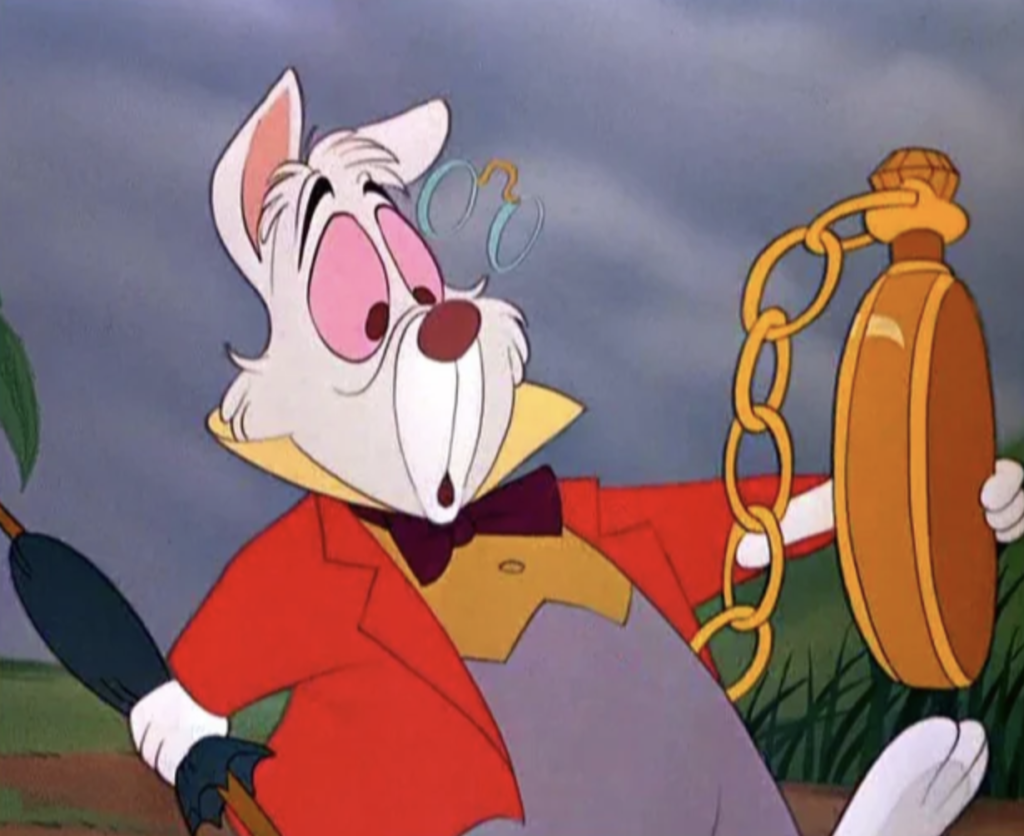
So now you know what “that” and “which” are (relative pronouns) and what they do (introduce a relative clause)…but how do you know which one to use? That all comes down to whether the relative clause is RESTRICTIVE or NONRESTRICTIVE.
The Decisive Question: Restrictive or Nonrestrictive?
A restrictive clause (which can also be called a “that” clause”) provides information that is absolutely essential to the meaning of the sentence. If you pulled out that relative clause, the meaning would completely change or even be lost altogether.
A nonrestrictive clause (or “which” clause) adds extra information that might be helpful or interesting but is NOT essential to the sentence’s meaning.
Here’s an example of a sentence with a couple of restrictive clauses:
The one that is standing on the left is Tweedle Dee, and the one that is on the right is Tweedle Dum.
The relative clauses are “that is standing on the left” and “that is on the right.” If you pulled out those clauses, you’d be left with a very unhelpful sentence:
The one is Tweedle Dee, and the one is Tweedle Dum.
I marked that sentence as incorrect because it doesn’t make sense to a reader (even though there is technically nothing grammatically wrong about it). Without those relative clauses, we don’t know which one is Tweedle Dee and which is Tweedle Dum.
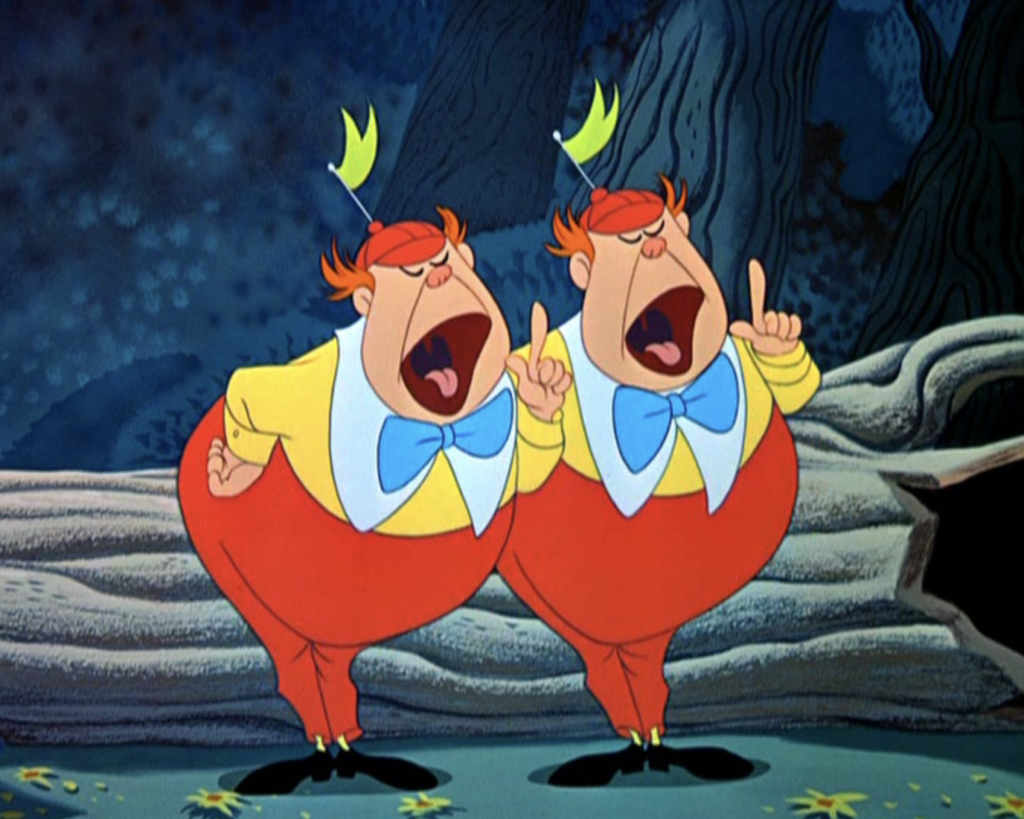
Here’s a sentence with a nonrestrictive clause:
The Queen of Hearts, who loves to play croquet, demanded that the roses be painted red.
The relative clause there is “who loves to play croquet.” That information tells us more about the Queen, but even without it, we would still understand the essential meaning of the sentence (that she wanted the roses to be painted red).
The Queen of Hearts demanded that the roses be painted red.
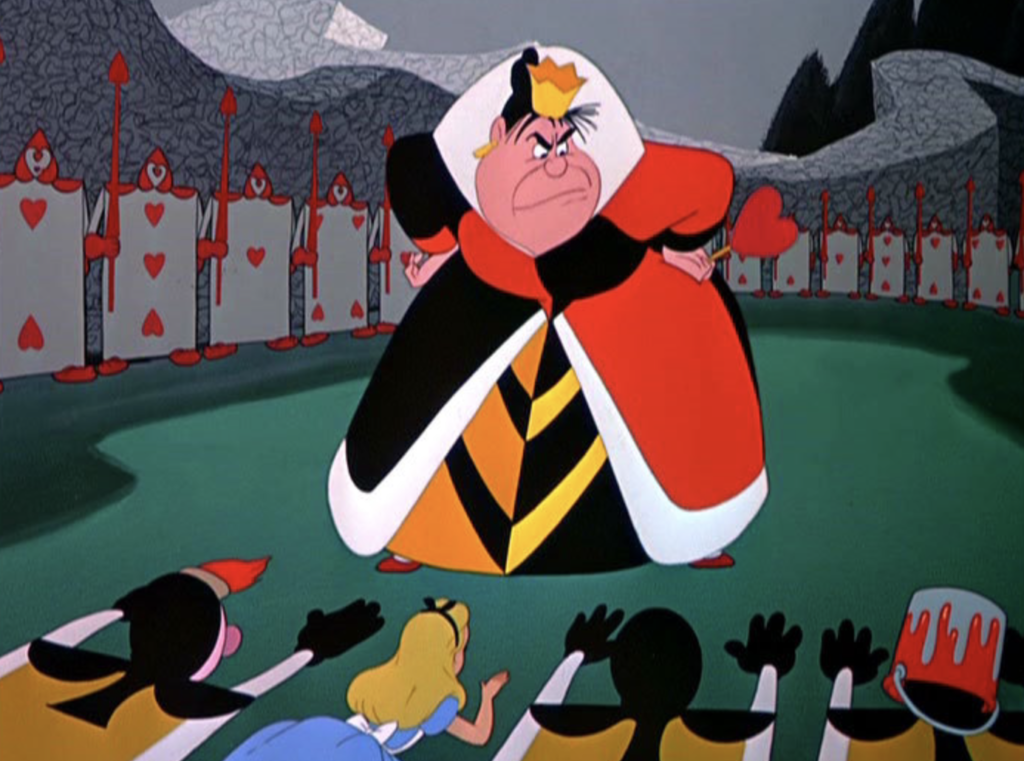
Ebbitt & Ebbitt said that a clause is restrictive “when the information it provides about something in the main clause is essential to the meaning the writer intended.” One easy way to tell whether a clause is restrictive or not is to say the sentence out loud. If you pause between the word and the phrase that describes that word, it’s probably nonrestrictive. If you don’t, it’s probably restrictive. Try it with this sentence:
The flowers that lined the pathway suddenly started to sing.
You probably didn’t pause before “that lined the pathway,” which tells you that it’s a nonrestrictive clause.
So What?
Now that you know the difference between restrictive and nonrestrictive relative clauses, you know the difference between “that” and “which.” You might have already caught on by reading those examples! Here’s the rule:
“That” is used to introduce a restrictive relative clause, and “which” is used to introduce a nonrestrictive relative clause.
If the information is essential, start with “that.” If not, start with “which.”
The hole which Alice climbed into led to Wonderland.
In this case, the relative clause “which Alice climbed into” is essential information. We don’t want to know about just any hole: we’re concerned with the one that Alice found. Thus we need “that” instead of “which”:
The hole that Alice climbed into led to Wonderland.

Here’s another:
The cookie, that looked delicious, said “eat me.”
Assuming there is only one cookie that says “eat me,” the relative clause “that looked delicious” provides some interesting information but is not essential to the meaning of the sentence. Since we’re operating on the assumption that there is only one “eat me” cookie, we don’t need extra information to identify which cookie we’re talking about. This clause calls for “which.”
The cookie, which looked delicious, said “eat me.”
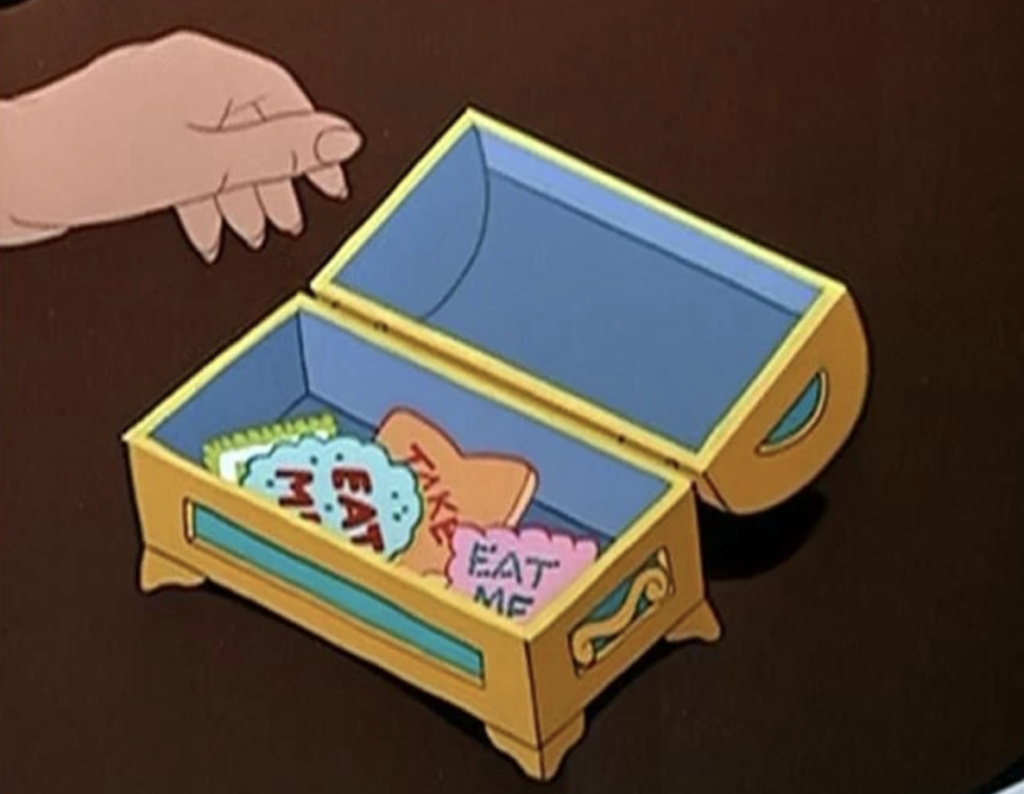
Sometimes it can be tricky to tell whether a clause is restrictive or nonrestrictive. In this sentence, the choice is obvious:
Rabbits that carry pocket watches are not commonly found.
Removing the phrase “that carry pocket watches” would completely change the meaning of this sentence. We don’t want to say, “Rabbits are not commonly found”: rabbits are pretty common, so that doesn’t make sense. We’re talking specifically about rabbits that carry pocket watches. Therefore, it’s easy to tell that the relative clause is restrictive (providing essential information) and we need “that.”
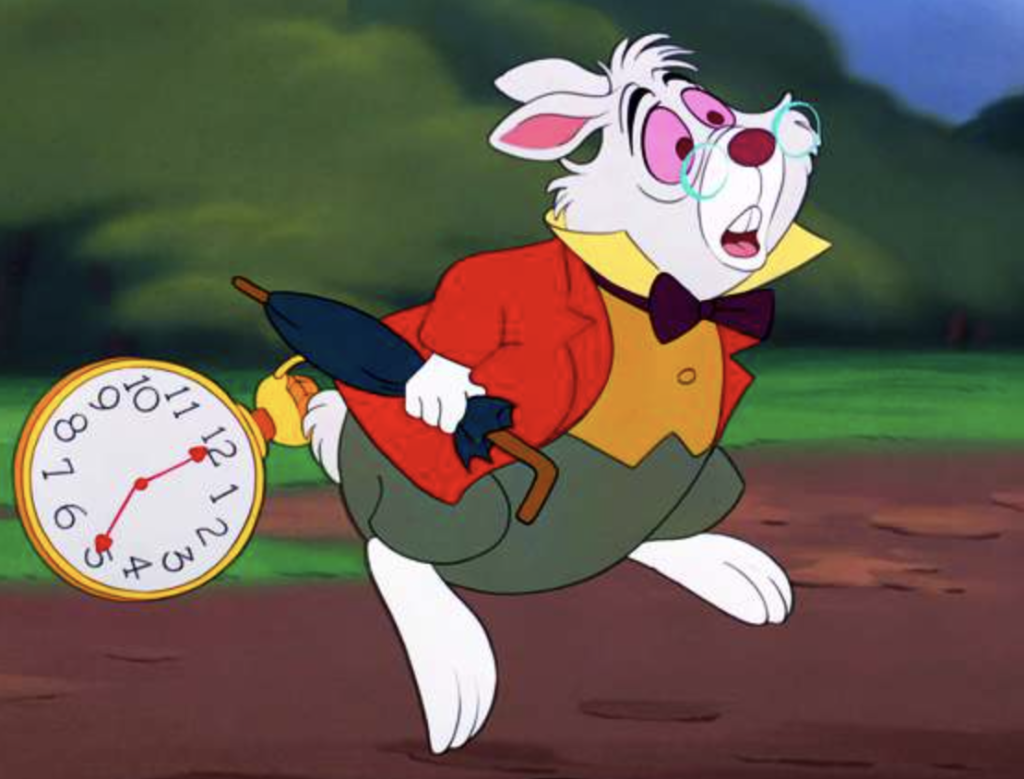
Consider this sentence, though:
The cards, which were painting the roses, moved quickly because they feared the Queen.
OR
The cards that were painting the roses moved quickly because they feared the Queen.
I highlighted these sentences in orange because both could potentially be correct: it just depends on your intended meaning.
In this case, the decision between “that” and “which” depends on your meaning: are all the cards painting the roses? If so, you need “which” because it’s a nonrestrictive clause. All the cards are painting, so we don’t need extra information about which ones we’re talking about. If only some of the cards are painting the roses, we do need that information in order to know which ones are moving quickly.
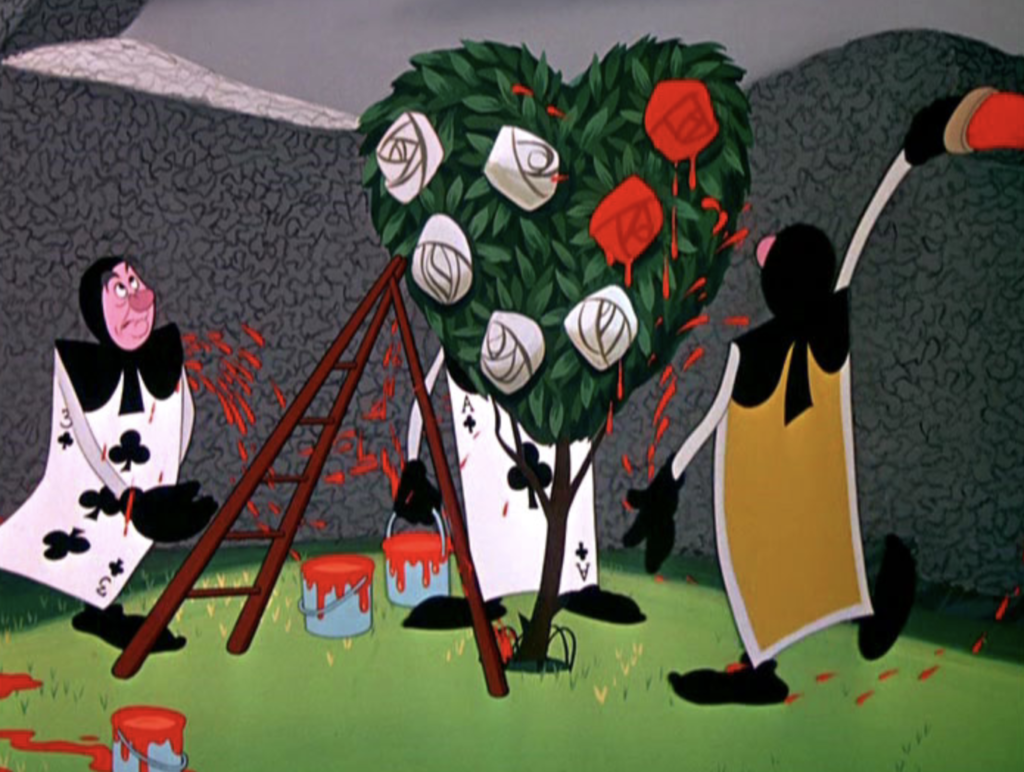
As the author, you can make the call of whether a clause is restrictive or nonrestrictive to your best judgment. Ebbitt & Ebbitt say, “Your job is to know what you mean. In the modifying clause or phrase [meaning the restrictive clause], do you mean to say something that the sentence requires for its basic meaning, or do you mean to offer information which—no matter how important—can be omitted from that sentence without detracting from its central message?”
Just make sure you communicate clearly to your audience whether the clause is restrictive or nonrestrictive by using “that” for restrictive clauses and “which” for nonrestrictive ones.
There’s one more very important signal that tells your audience whether a relative clause is restrictive or nonrestrictive: commas.
To Comma or Not To Comma…
The rule for commas with relative clauses is easy, and you might have already noticed it in the examples: you SHOULD surround the clause with commas if the clause is NONRESTRICTIVE, and you should NOT surround it with commas if the clause is RESTRICTIVE.
The doorknob that guards the entrance to Wonderland has a very small keyhole.
The Cheshire Cat, which grinned in a frightening way, told Alice she had to choose a path.
I imagine a little crane reaching down, taking hold of the commas, and lifting the entire relative clause out of the sentence. If the relative clause is restrictive, this kind of demolition would be disastrous for the sentence’s meaning! But if it’s nonrestrictive, it’s OK to pull it out. So if you have a restrictive clause, make sure to leave those commas out!
The tree, that held the Cheshire Cat, was located at a fork in the road.
In this case, we want to know specifically about the tree that is holding the Cheshire Cat—it’s essential information that distinguishes which tree is being discussed. We need to remove those commas so that the imaginary crane doesn’t remove the restrictive clause!
The tree that held the Cheshire Cat was located at a fork in the road.

Like “that” and “which,” commas provide a signal to the reader about whether the clause is restrictive or nonrestrictive. You should always make sure to use these commas in pairs—if you have one BEFORE the nonrestrictive clause, you definitely need its pair AFTER that clause. The only exception is if a relative clause is located at the end of a sentence, like this:
Alice picked up the cup of tea, which the Mad Hatter had set in front of her.
In that case, I consider the second comma in the pair to be “invisible” because we would never end a sentence with a comma.
Here’s a graphic that sums up everything we’ve learned:
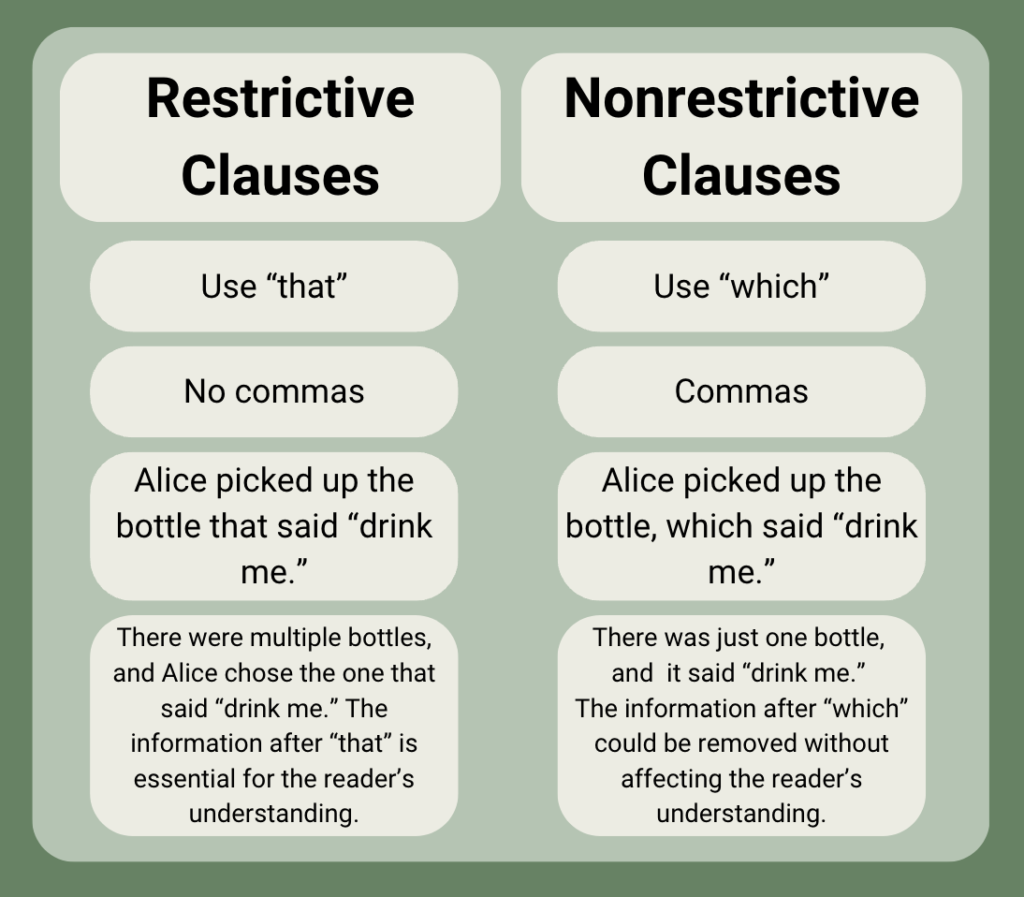
A Word of Warning About “Which”
After all that, I have to warn you that “which” does NOT like to stay in its lane. Although we make the distinction between “that” and “which” in American English, in British English, “which” is often used for restrictive clauses as well as nonrestrictive ones. That might be the reason why many people forget to keep “that” and “which” separate over here across the pond.
The APA style guide states, “Although some writers use ‘which’ for both restrictive and nonrestrictive clauses, APA style reserves ‘which’ for nonrestrictive clauses and ‘that’ for restrictive clauses. Consistent use of ‘that’ for restrictive clauses and ‘which’ for nonrestrictive clauses will help make your writing clear and precise.“
So you might see “which” sneaking into restrictive clauses out there in the wild, but just know that it’s a mistake and should be corrected whenever possible (at least in America). “That” hasn’t taken over any territory in nonrestrictive clauses, though. Funny how that always happens—with commonly confused words, there’s almost always one that’s the bully and tries to take over the other’s job while the other one stays politely in its lane (see my posts on “further” vs. “farther” and “fewer” vs. “less” for more examples).
Armed with this new knowledge, you’re ready to use “that” and “which” correctly!
Sources:
- American Psychological Association. Publication Manual of the American Psychological Association. 7th ed. Washington, DC: American Psychological Association, 2020.
- The Chicago Manual of Style. 17th ed. Chicago, IL: The University of Chicago Press, 2017.
- Ebbitt, D. R., and W. R. Ebbitt. Index to English. 8th ed. New York: Oxford University Press, 1990.
- Einsohn, Amy. The copyeditor’s handbook. 3rd ed. Berkeley and Los Angeles, California: Univ of California Pr, 2011.
- Hale, Constance. Sin and Syntax: How To Craft Wicked Good Prose. New York: Three Rivers Press, 2013.
- Purdue OWL® – Purdue University. Accessed September 3, 2024. https://owl.purdue.edu/.
- Truss, Lynne. Eats, Shoots & Leaves: The Zero Tolerance Approach to Punctuation. New York, NY: Gotham Books, 2003.
